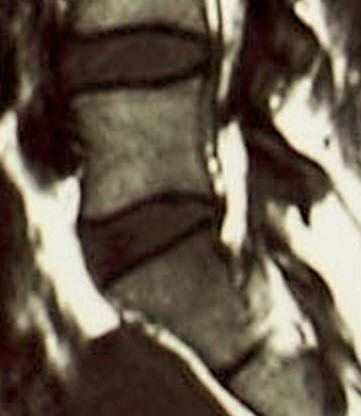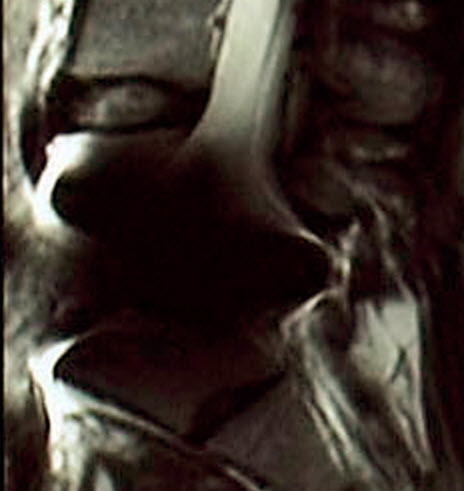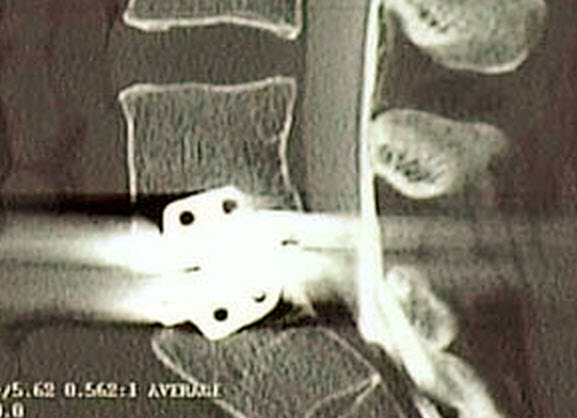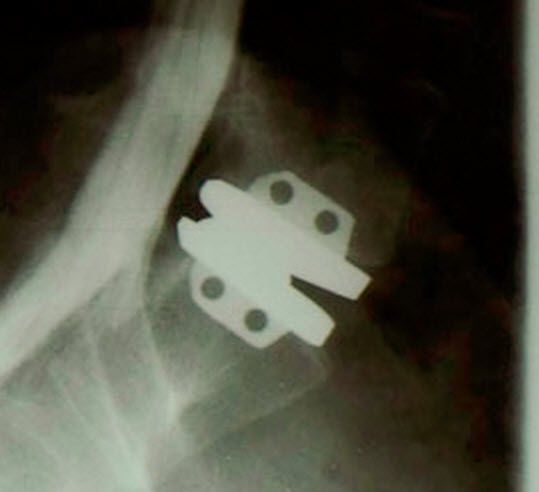There are multiple issues with metal and MRI's. If you have some kinds of spinal cord stimulators, you can't have MRI because of the potential for the magnet to move the leads, potentially damaging the spinal cord.
Another issue, as mentioned above is the artifact or distortion. MRI is magnetic resonance imaging. Metal distorts the image generated by MRI. Unless there are other issues (like spinal cord stimulator leads) you may have MRI with ADR's. However, the image near the adr will be completely blown out. CT scans will also be blown out around the ADR. When Jim was saying that CT is better, he was probably thinking about the post myelogram xrays. Myelogram usually includes a post-myelogram CT.
I have seen MRI's in a patient without any metal implants, following a simple endoscopic discectomy. They may have substantial artifact from microscopic metal particles left behind by the tools used in the surgery.
The images below are from the same patient. Following a failed Maverick ADR surgery, he was continuing to have tests.
Note that if you are in this situation, you've got serious trouble (as is the case if you have a failed fusion.)
Pre-ADR MRI

Post-ADR MRI (blown out by artifact)

Post-ADR, post-myelogram CT (blown out by artifact)

Post-ADR, myelogram Xrays (note that the cauda equina (spinal cord) is nicely outlined by the contrast that was injected for the myelogram.
